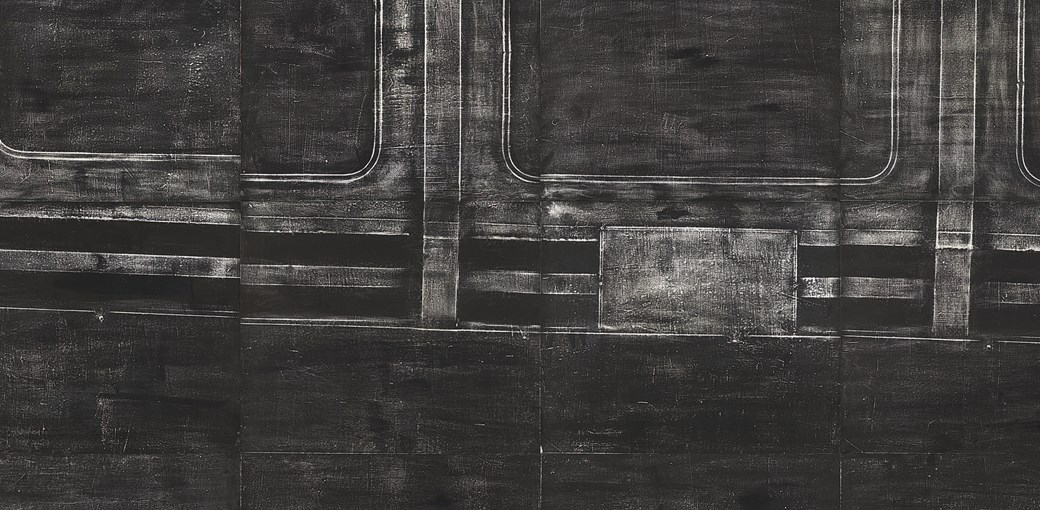In the wake of 2016, a year defined by the US’s election of a megalomaniac and Britain’s embrace of nationalism through brexit, SPAN comes as a welcome relief. The exhibition combats the breakdown of basic communication by addressing notions of connectivity and bridging the divides that separate us from each other. It features works by five prominent Western Australian artists; Clyde McGill, Tanya Lee, Andrew Sunley-Smith, Olga Cironis, and Susanna Castleden.
The works by each of the artists are separated into different spaces, with artist Clyde McGill occupying the first two rooms of the maze-like Fremantle Arts Centre. His piece Dolorosa, stuck with me most. Presenting 15 pieces of abstract impressionism, Dolorosa uniformly utilises red and black colour compositions in its narrative progression through the rooms of a familiar story: the plight of a refugee family and their harrowing search to find safety, security, and a place to call home. Coupled with the paintings is a strange and intricate wiring system occupying the space above our heads, and a cacophony of sounds echoing around the room. On the night of the opening, McGill describes the piece as a visual artist’s take on an opera, incorporating all its core tenets: a story, visuals, and sound. Dolorosa utilises audience participation to create an ever-morphing artwork. McGill hands out long black and red rods with which, I slowly realise, the audience is to write their own music into this evolving opera, by playing (or perhaps banging) upon the wire structure suspended at head height.
The cacophony is haunting and evocative, at times jarring and intensely loud. And yet, it seems to complete the story that the paintings depict along the walls. McGill walks us through the rooms, from painting to painting, encouraging different styles of instrumentation upon the strange wire instrument above while talking us through the narrative the paintings suggest. Without his guidance, the story would have been lost – yet that might be a part of the magic of this performance. In McGill’s Dolorosa, the artwork is what we make it to be, even more so with our contribution to its soundscape. Through our participation, McGill bridges the gap between the artist and audience, the artwork and viewer; we are all actors in his opera.
Of the five works displayed, many are immersive experiences. Tanya Lee’s absurdist piece, Curtilage, 2016, is hypnotic and mesmerising, disrupting natural boundaries between intimate and shared space. Andrew Sunley-Smith’s Carbon Supremacy, 2015-2017, is a visceral, full-body experience, the sight and smell of which linger and invokes Husserl and Merleau-Ponty’s notions of ‘being in the world’. At this rate, claims Sunley-Smith, there won’t be much world to be in. Like McGill, Olga Cironis bridges the gap between artist and viewer. Performing Wednesday to Sunday from 12pm until 3pm, Cironis weaves the hair of each participant into the tapestry she creates. Susanna Castleden’s Airplane Wing, 2015, is the last piece I encountered in this weird and wonderful exhibition. The span of the wing of an aeroplane, presumably to scale, occupies an entire, darkly lit, room and impresses upon me its severity and the stark harshness of its machinations. The work explores the actuality of spanning physical distance through its presentation of an object implicitly associated with travel in a rubbing on paper maps, a medium implicitly associated with geographical difference.
While bringing together works that focus on the bridging of boundaries, SPAN feels oddly disconnected and it is hard to see clear connections between the works. Sunley-Smith’s work, while poignant and moving, feels out of place. Yet perhaps this is SPAN’s strength; steering clear of didactic moralisation and encouraging communication between the viewers of the exhibition. SPAN might mean something different to everyone who visits the exhibition, which is, I think, precisely the point. The exhibition encourages dialogue and respect in a discursive fashion, and the elimination of interpersonal boundaries. In a world so blighted by the disrespect of basic human rights, common sense, and each other, SPAN is a much-needed change.
Words by Karl Frederick Sagrabb
SPAN runs at the Fremantle Arts Centre from the 4th February until the 26 March

